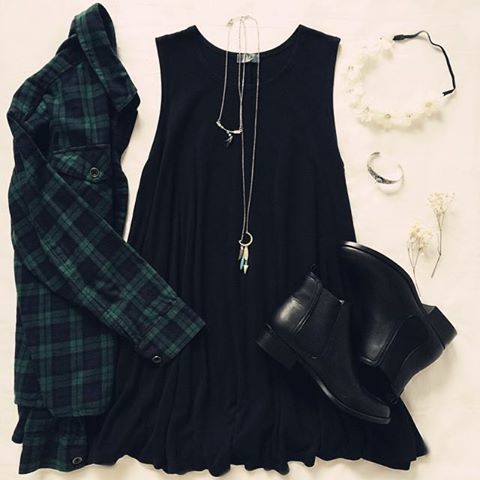I’ve had a few comments on my posts about figuring out a colour palette lately from people who are struggling to find their colour palette, and it got me thinking: What if we ignore colour and just focus on contrast and depth?
Basically, imagine you look at your outfit as a black and white picture. Do you like mixing dark and light? Do you want all dark, all light, or all mid-tones that blend harmoniously? I think that knowing your preferences is just as useful as knowing your colours!
Training our eye:
Before we get started, let’s train our eyes and define terms. (Heaven knows I might be using terminology wrong, so here’s what I mean by contrast and depth!)

Low contrast and light.

Low contrast and dark.

High contrast with light, dark and mid-tones.
For me, contrast usually comes in the prints I chose, but it could also be in how solid fabrics, accessories and shoes work into the outfit.
Looking at myself as an example:

To begin, let’s investigate the amount of contrast and depth in our own face. I’m naturally dark blonde with pale skin and blue eyes. In other words, I’m very low contrast! One of the reasons I love makeup is that it lets me add contrast to my face through visible eyebrows, mascara, lipstick etc.
A high contrast face might have dark skin and brightness from teeth and the whites of their eyes, or might have fair skin and dark hair. For more on the topic, check out Aly Art’s video here. (I like Aly’s content in general, but be warned that as a Russian speaker of English, her choice of words is sometimes questionable.)
Now let’s look at black and white examples of outfits I don’t feel good in, compared with outfits I love, and find the patterns.
Outfits I don’t feel good in:

Looks cute in a photo in good light, but in reality red and black make me feel washed out.
Analysis: Low contrast and dark colours.

This dress was immediately relegated to pyjamas.
Analysis: Low contrast and dark. If this print had some white I might love it!

In 9 years of prolific sewing, this is the closest thing I have to an all-light outfit, and of course it is actually full of contrast. But if you blur your eyes and imagine this as a white fabric without the print, can you see how it would perfectly blend into my pasty legs?
Analysis: very light outfits with no contrast make me feel like an amorphous blob, aka a potato. Even my wedding dress has contrast of a turquoise belt and tulle at the hem!
Outfits I feel good in:

Bam! Hello! Even in black and white this print is graphic and high contrast. I feel like a million bucks in this dress.
Analysis: High contrast with a mix of light, dark and mid-tones.

The jacket provides contrast, but I love all of my several burgundy velvet dresses even without a contrasting layer. I think it is because the sheen of velvet adds contrast.
Analysis: Contrast from the texture of the fabric catching the light, and from a print.

I wanted to include this outfit because this is the subtle end of the prints I like: it has light and dark in the small leaves, but they aren’t so tiny that it washes into one shade from a distance, like Liberty fabric often does.
Analysis: Mid-toned fabric with some lightness in the print and dark pants brings enough contrast to this outfit.
What is the take-away?
I like high contrast outfits! I know that about myself, and I always look for prints that have a dark and a light as well as colours that I like. I wear black and white prints quite often, and I think the high contrast saves them from washing me out. I am low contrast by nature, but I chose to alter that just as I chose to dye my hair warm or cool and wear different colours.
So what about you?
First of all, what is the level of depth and contrast in your own face? I think you can either match your natural contrast or strategically go against it, as I do, but either way it helps to know what you are starting with.
Next, consider your favorite outfits. Do you like sharp contrast from lights and darks, or do you prefer something more homogenous? Some people look so fabulous “dressed like a crayon”, and others (me) look washed out. You might also consider if you like your contrast to come from prints or from layering solids.
What about outfits you think you should like, but actually feel bad in? Generally in colour theory we might assume those colours are the wrong shade for you, but I think it equally could be that the depth and contrast is off.
In true teacher style, now let’s put it all together! How would you complete this sentence?
I like (high/low) contrast outfits with (dark/midtone/and/light) tones.
Does that help clarify your style? Could it help when you buy fabric, or make outfits? I’m genuinely curious to know!